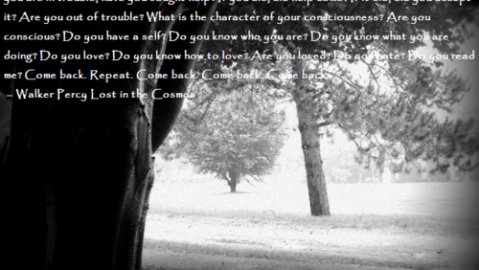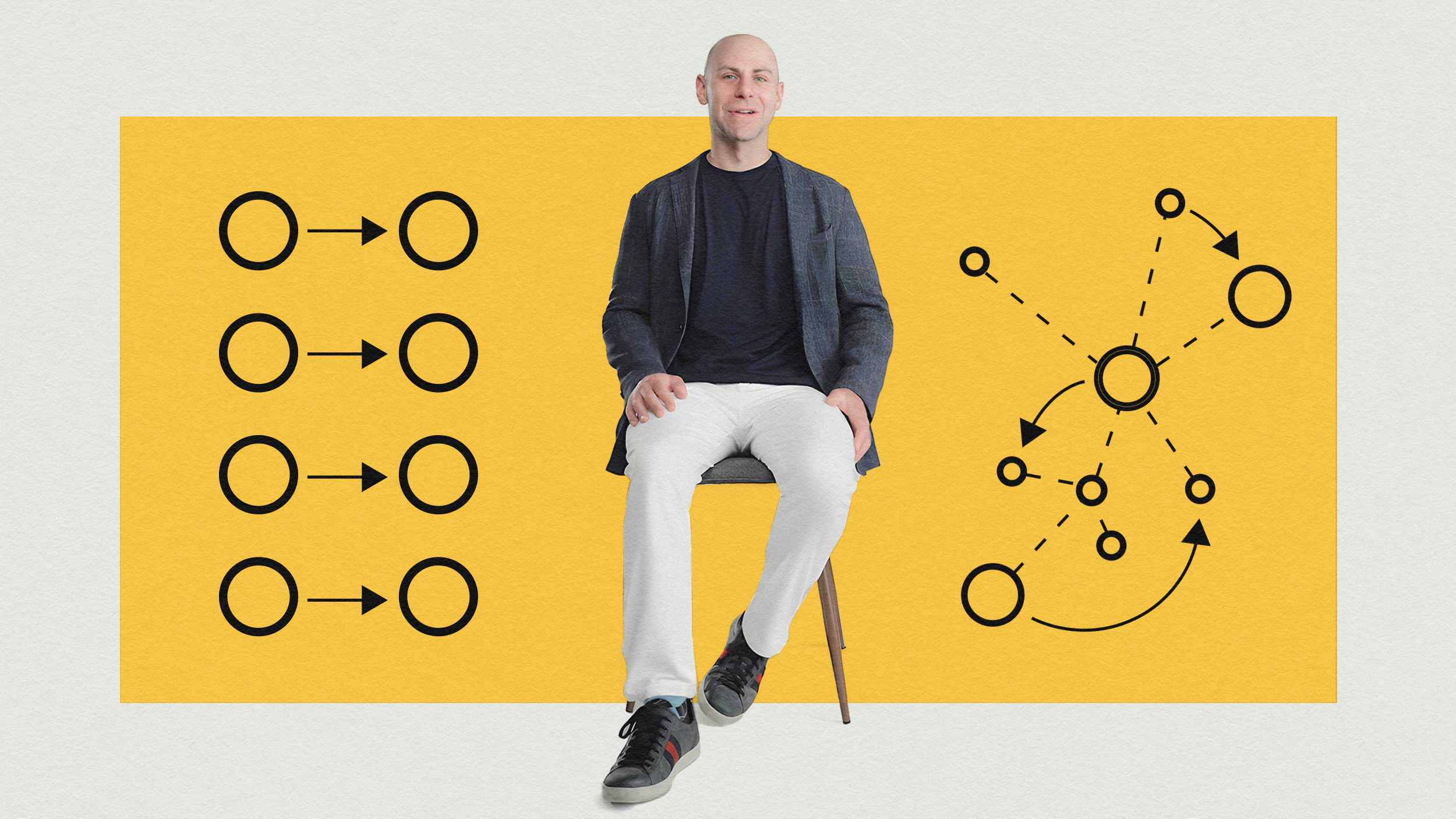Did Walker Percy Really Write the Last Self-Help Book?

So lots of readers (about six) have written ME asking for advice on what book they should read to turn their lives around.
Here’s my recommendation: Lost in the Cosmos by the philosopher-physician-novelist Walker Percy. It was published in 1983, and I’m one of the very few Americans celebrating the book’s 30th anniversary. Several posts will be required to lay out even the basics about being lost in the cosmos. This, of course, is the first.
Percy’s Lost in the Cosmos is subtitled “The Last Self-Book.” He said he gave the book that title so that it would end up in the self-help section of bookstores. And it did.
From Percy’s view, our bookstores are mostly filled with two kinds of books—self-help books and diverting or entertaining books about scandal-ridden law firms or extraterrestrials or VAMPIRES or a bunch of sexually obsessive shades of grey. Diversions, of course, get your mind off yourself, relieve your stress, help out in alleviating your fears, your anxieties, your boredom. According to Pascal, most of our lives are diversions, escapes from what we really know, evidence of our misery without God. According to Percy, most of our lives these days are diversions that become progressively more disappointing. The pursuit of happiness has become the pursuit of diversion in the midst of prosperity. And one problem among many about living in our highly self-conscious time is that diversions we know are merely diversions are boring or only very weak and evaporating antidotes to despair. That’s why Percy knew people visiting museums are mostly ineffectively fending off despondency. That’s also why highly educated bourgeois Americans today try so hard and fail so miserably in being bohemians too.
Percy adds that the self-help books are diversions too. They claim to use the latest studies to tell us who we are and what we’re supposed to do. They tell us that we need, say, seven habits to be highly effective, to be productive, to satisfy our basically material needs. We are, like the other animals, organisms in environments, and we can be happy if we’re think for ourselves, listen to the experts, stay safe or avoid all the risk factors, are rich, and have effective interpersonal dynamics. But lots of us, Percy observes, faithfully follow the self-help advice and end up feeling more disoriented or displaced or more empty than ever. All the self-help experts can add is to stay busy (but with stress-relieving periods of recreation) and positive so eventually things will turn around for you.
So the self-help books work well for a while but eventually fail, as all diversions do. They claim to but do not really tell us who we are and what we’re supposed to do. They can’t extinguish the experiences of self-consciousness or the self or soul by denying that what’s distinctively human about each of us really exists. They can’t take out what the existentialists, such as the philosopher Heidegger, truthfully describe. We’re not organisms in an environment, and so we can’t really lose ourselves—our personal identities—in some environment, in some COSMOS in which each of us is merely a part. We can’t lose BEING LOST. That’s why the master psychologist Aleksandr Solzhenitsyn heard just beneath the surface of all our happy-talk pragmatism the howl of existentialism.
For Percy, the resulting ANXIETY—the experience of being an inexplicable or absurd leftover in the world the EXPERTS describe—ought to be a prelude to WONDER about how strange the human self or soul is. But for the experts, anxiety that has no environmental cause (such as being isolated from the other social animals) must have a physical or chemical cause. So there must be a physical or chemical remedy—a mood-altering or mood-elevating drug. As Percy explains, for our experts psyche-iatry—discovering who we are and what we’re supposed to do through attentive conversation—is replaced by a kind of chemo-therapy. For Percy, Socrates and Freud were old-fashioned doctors of the soul; the expert objection to their approach is that was time-consuming and expensive and the results uncertain or unreliable. Who cares about the so-called REAL CAUSE if we can effectively manage the SYMPTOMS? Why shouldn’t we CHOOSE the moods that make us upbeat and productive?
Self-consciousness doesn’t become the enemy, but something to be controlled or managed through technology. But the truth is that even the drugs or chemo-therapy don’t work better than diversions. It’s easy to zap self-consciousness out of existence, but that would make the zappers the masters and the zapped the slaves. The zappers, as a result, would be more miserably lonely than ever. And, in our irrational pride and our love, we don’t really want to surrender our personal identities. We want to be able to manage our self-consciousness the way we can techno-control everything else. But our experts don’t really know what engineered mood or judicious mixture of moods would really make us happy or at home. It turns out that our moods—the moods we’ve been given by nature—are indispensable clues to the truth about who we are and what we’re supposed to do. That’s why Percy says, against the cheomotherapists, that he has a right to his anxiety. It’s his right to liberty that might lead to real truth and real happiness.
The other self-help books can’t tell each of us why we have that right, because they don’t even admit each of us is invincibly LOST IN THE COSMOS without help we can’t possibly provide for ourselves. We’re born to trouble as the sparks fly upward. Our alienation doesn’t have an environmental or physical or political or Historical cause; it’s part of and caused by our self-consciousness or personal identity. It’s at the core of our REAL psychology.
So every self-help book has been a failure until Percy’s. His is the first truthful and effective self-help book. For that reason, it’s also the last self-help book. Percy explains, quite scientifically, why each of us is homeless, and, by so doing, he helps us be at home with our homelessness, and so free to be as at home as we can be with the good things of this world.
Stay tuned. There’s a lot more to come.





